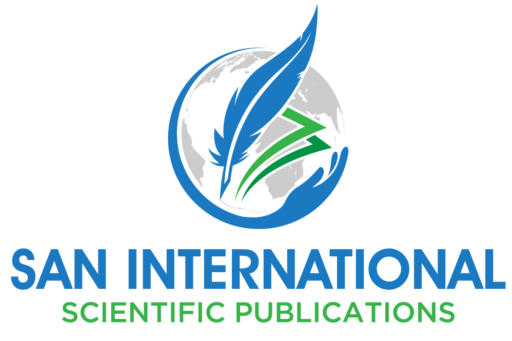Book Title: Contemporary Research Across Disciplines
Editors: Dr. R. Saravana Selvakumar and Mr. R. Venkatesan
ISBN: 978-81-978738-1-2
Chapter: 2
DOI: https://doi.org/10.59646/crc2/278
Authors:
Dr. Amutha Priya Thangarajan, Department of Botany, G. Venkataswamy Naidu College, Kovilpatti, Tamil Nadu, India
Mr. Ramkumar Rajendran, Research Scholar, Department of Zoology, St. Xavier’s College, Palayamkotti, Tamil Nadu, India.
Mr. Madasamy Koilraj, Research Scholar, Department of Zoology, St. Xavier’s College, Palayamkotti, Tamil Nadu, India.
Abstract
Toothpaste, a gel-based dentifrice, is commonly used alongside a toothbrush to clean teeth and maintain their health and appearance. It plays a crucial role in promoting oral hygiene. In the United Kingdom, triclosan—a known antibacterial agent—is frequently found in toothpaste. Herbal variants, however, often incorporate baking soda, aloe, eucalyptus oil, myrrh, plant extracts, and essential oils. Common oral microflora, including Escherichia coli and Candida albicans, particularly Streptococcus mutans and E. coli, tend to accumulate on the tooth surface and gingival epithelium. The present study, conducted through in vitro experiments, reveals that toothpaste formulations with natural antimicrobial agents exhibit superior efficacy in controlling oral microflora compared to those with synthetic antimicrobials like triclosan. In this study, three commercial toothpaste brands—Colgate, Close Up, and Mouth Fresh—demonstrated antimicrobial activities comparable to broad-spectrum antibiotics against dental microorganisms such as Staphylococcus spp., Micrococcus spp., and Lactobacillus spp. Notably, Colgate toothpaste displayed a higher zone of inhibition on MacConkey agar plates. Similarly, Close Up toothpaste also showed significant results in the MacConkey agar well plate method. While these toothpastes show potential for managing dental infections, it is important to note that the results from in vitro studies may not directly translate to in vivo conditions or clinical effectiveness. Therefore, further research under in vivo conditions is essential. This study also highlights the need to evaluate the antimicrobial efficacy of various herbal toothpastes and compare them with conventional dentifrices known for their antibacterial properties.
References
Bhattacharya, S., Virani, S., Zavro, M., & Hass, G. J. (2003). Inhibition of Streptococcus mutans and other oral streptococci by Humulus lupulus L. constituents. Economic Botany, 57(1), 118–125.
Botelho, M. A., Nogueira, N. A. P., Bastos, G. M., Fonseca, S. G. C., Lemos, T. L. G., Matos, F. J. A., Montenegro, D., Heukelbach, J., Rao, V. S., & Brito, G. A. C. (2007). Antimicrobial activity of the essential oil from Lippia sidoides, carvacrol, and thymol against oral pathogens. Brazilian Journal of Medical and Biological Research, 40(3), 349–356.
Chander, J. (2010). Textbook of medical mycology (3rd ed.). Mehta Publishers.
Cheesbrough, K. C. (2002). Sodium fluoride in toothpaste (8th ed.). Williams Publishers.
Clarke, J. K. (1924). On the bacterial factor in the aetiology of dental caries. British Journal of Experimental Pathology, 5, 141–147.
Elechi, O., & Bernard, O. (2023). Production of faecal sludge-based compost as biostimulant for crude oil-contaminated soil remediation. Journal of Inventive and Scientific Research Studies, Vol. I, Issue 2, 224–238.
Fine, D. H., Furgang, D., Markowitz, K., Sreenivasan, P. K., Klimpel, K., & De Vizio, W. (2006). The antimicrobial effect of a triclosan/copolymer dentifrice on oral microorganisms in vivo. Journal of the American Dental Association, 137(10), 1406–1413.
Galati, E. M., Monforte, M. T., Forestieri, A. M., Miceli, N., Bade, A., & Trovato, A. (1999). Salvadora persica L. hypolipidemic activity on experimental hypercholesterolemia in rats. Phytomedicine, 6(3), 181–185.
Ghelichli, M. (2014). Formulation of new herbal Salvadora toothpaste with anti-decay, wound healing, and caring for tooth and periodontal diseases. Bulletin of Environmental Pharmacology and Life Sciences, 3(11), 115–122.
Itthagarun, A., & Wei, S. H. (1996). Analysis of fluoride ion concentrations and in vitro fluoride uptake from different commercial dentifrices. International Dental Journal, 46(4), 357–361.
Jarvinen, H., Jenevou, J., & Huovinen, P. (1993). Susceptibility of Streptococcus mutans to chlorhexidine and six other antimicrobial agents. Antimicrobial Agents and Chemotherapy, 37(6), 1158–1159.
Kolapo, A. L., Okunade, M. B., Adejumobi, J. A., & Ogundiya, M. O. (2009). Phytochemical composition and antimicrobial activity of Prosopis africana against some selected oral pathogens. World Journal of Agricultural Sciences, 5(1), 90–93.
Krieg, N. R. (1984). Bergey’s manual of systematic bacteriology. Williams & Wilkins.
Maripandi, A., Kumar, T. A., & Al-Salamah, A. A. (2011). Prevalence of dental caries bacterial pathogens and evaluation of inhibitory concentration effect on different toothpastes against Streptococcus spp. African Journal of Microbiology Research, 5(14), 1778–1783.
Nelson, E. S., & Elechi, O. (2024). Technical assessment of bio-oil production through the pyrolysis of empty palm fruit bunches – A review. Journal of Inventive and Scientific Research Studies, Vol. II(Issue 1), 15-45.
Nwakanma, C., Ejim, C. J., & Unachukwu, M. N. (2014). The effects of selected toothpaste on the microbial flora of the mouth of GOU students. International Journal of Current Microbiology and Applied Sciences, 3(9), 785–792.
Pannuti, C. M., Mattos, J. P., Anoya, P. N., Jesus, A. M., Lotufo, R. F., & Romito, G. A. (2003). Clinical effect of a herbal dentifrice on the control of plaque and gingivitis: A double-masked study. Pesquisa Odontológica Brasileira, 17(4), 314–318.
Prasanth, M. (2011). Antimicrobial efficacy of different toothpastes and mouth rinses: An in vitro study. Dental Research Journal, 8(2), 82–85.
Tiwari, K. B., Shrestha, U. T., Acharya, A., Subedi, B., Paudyal, B., & Jnawali, M. (2008). Antibacterial activities of locally used toothpaste against dental pathogens. Journal of the Institute of Medicine, 30(2), 15–20.
Zauri-Arite, E., Van Merle, J., & Ten Carte, J. M. (2001). Confocal microscopy study of the undisturbed and chlorhexidine-treated dental biofilm. Journal of Dental Research, 80(6), 1436–1440.

